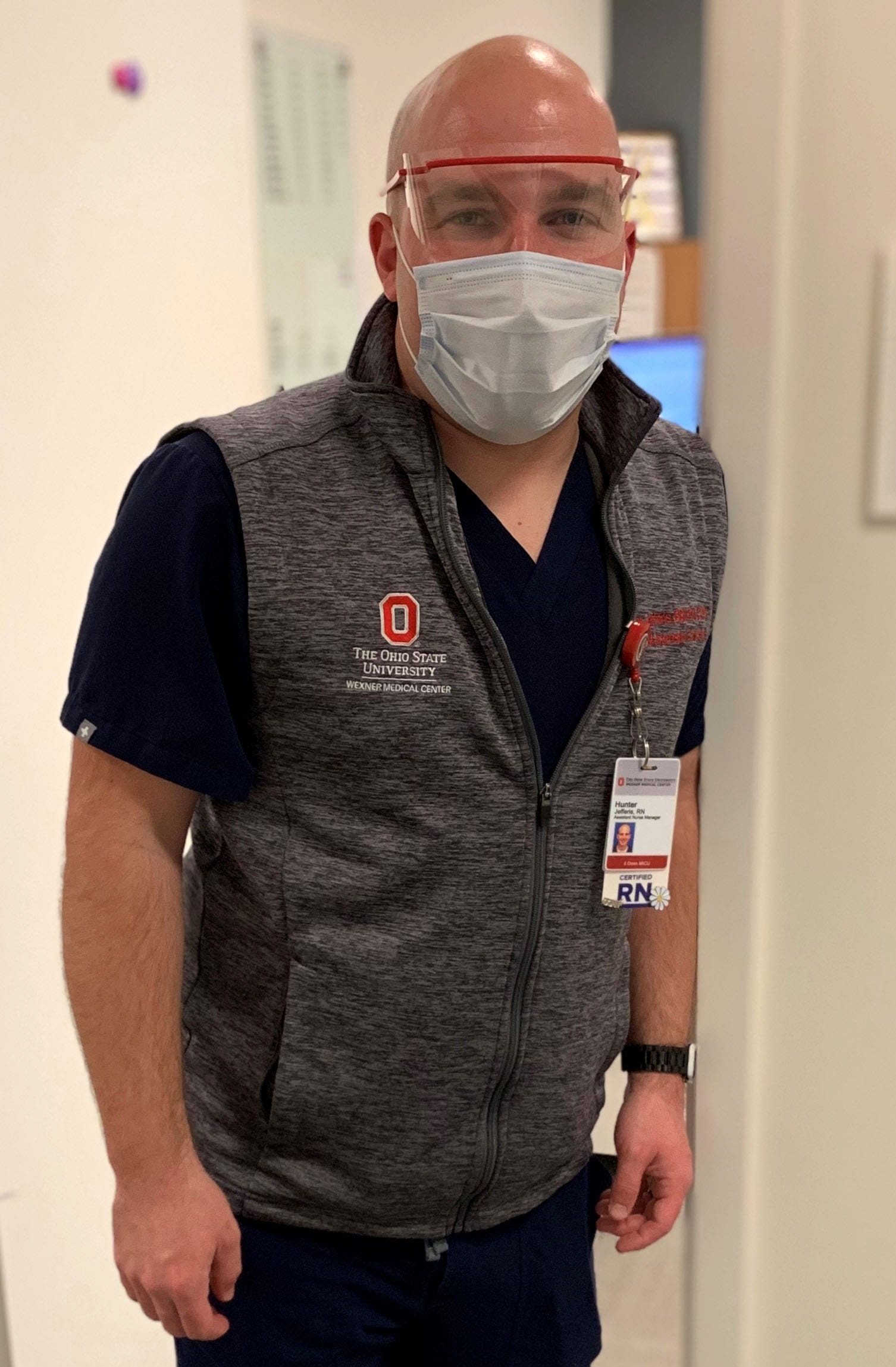
April 21, 2020 – At the end of the day, I drive home and shut off the radio. I do not take any phone calls and sit in silence for 40 minutes to decompress from all of the “noise” from the day. When I pull into my garage, I have to worry about bringing the virus into my home — to my pregnant wife or my 3-year-old daughter.
This entire experience has been mentally, physically and emotionally taxing. Hours upon hours of virtual meetings to discuss the current state of affairs, improvement of testing, development of clinical care guidelines, supply chain shortages and planning for the surge. In retrospect, this planning was worth it as it seems the worst is here now. We have had to repurpose new areas quickly to care for our overflowing critical care patient population.
Health care workers cannot escape COVID-19. It is the topic of their work, the topic of social media and the topic of mainstream media. We take advantage of The Ohio State University’s Stress, Trauma, and Resilience (STAR) program, the Department of Chaplaincy and BuckeyePaws. I nearly broke down in tears to see the staff’s anxiety momentarily decompress when Shiloh, a Golden Retriever, visited our conference room.
In the Medical Intensive Care Units (MICU) where I am an assistant nurse manager, we’ve seen COVID-19 patients of many different ages with varying health disparities. Many of our patients require life support. We have successfully rehabilitated some of our patients who have been able to walk out of the hospital doors. We have also seen death.
One of the most morally-distressing facets of caring for COVID-19 patients is the isolation of the patients from their loved ones. For patients nearing the end-of-life, we have obtained computer tablets, so they can visually communicate with family members. We do not let patients die alone. A critical care nurse is always with them.
I feel responsible for making sure that all our nurse teams have the most up-to-date information – issues such as isolation procedures, diagnostic changes, visitation alterations, staffing plans and new policies. There have been days where I arrive at 5 a.m. and stay until 7 p.m. I am one of three nurse leaders who have altered our schedules to be there seven days a week for staff, all three of us working nearly 60 hours per week.
The Ohio State University Wexner Medical Center has done a great job allocating its resources, and the state of Ohio has done a phenomenal job pushing for assistance from manufacturers and the federal government. But I still am burdened with concern that the personal protective equipment (PPE) won’t be there when we need it most.
There has been an outpouring of compassion, unity and support for our MICU nursing staff, respiratory therapists and health care providers. We have received vital PPE from the loved ones of our staff, even a shipment of face shields from SpaceX all the way from California. As the surge is upon us, we would still benefit from respirators, N95 masks and surgical masks.
My nursing team has told me they feel the support of the critical care nursing leadership team, the Wexner Medical Center and the community. The fact that my staff feels supported throughout the long days and weeks of this unprecedented crisis is what gives me the drive to continue my work.
Hunter Jefferis, BSN, RN, CCRN

Hunter Jefferis and his nursing team huddle for a team meeting on Easter Sunday while respecting social distancing.
How you can help
Give by Mail
The Wexner Medical Center Development Officec/o The Ohio State University Foundation
P.O. Box 736096
Chicago, IL 60673-6096
